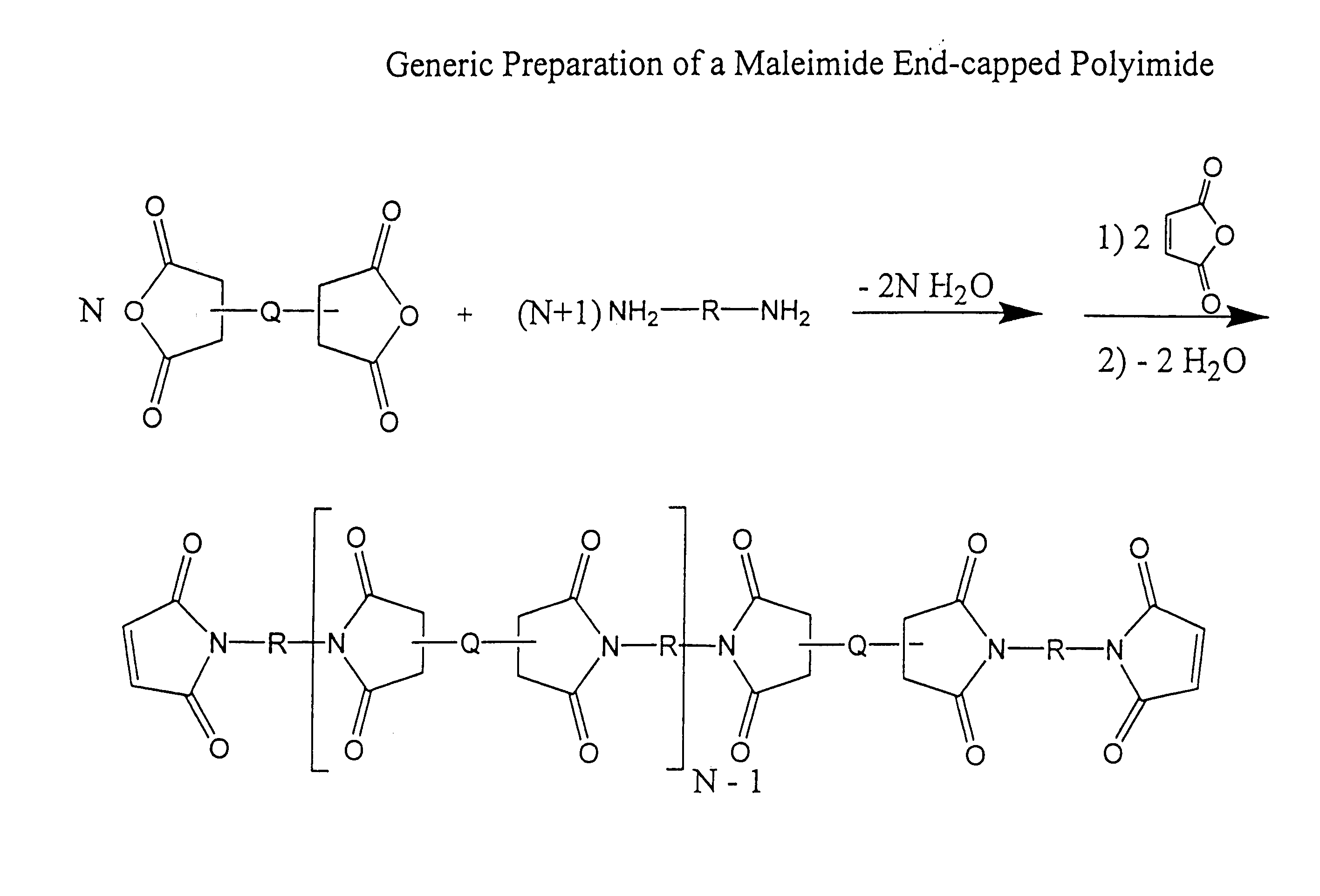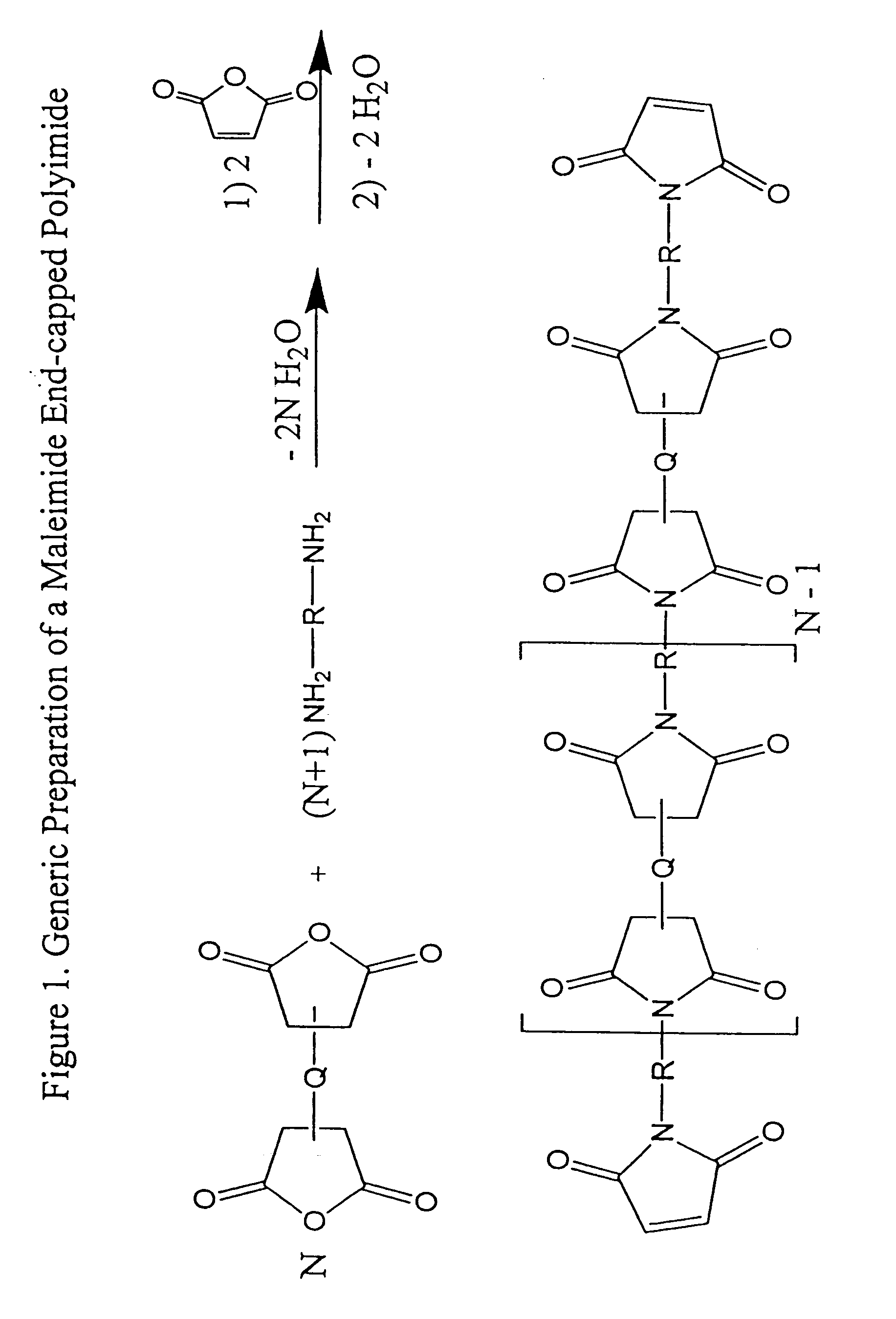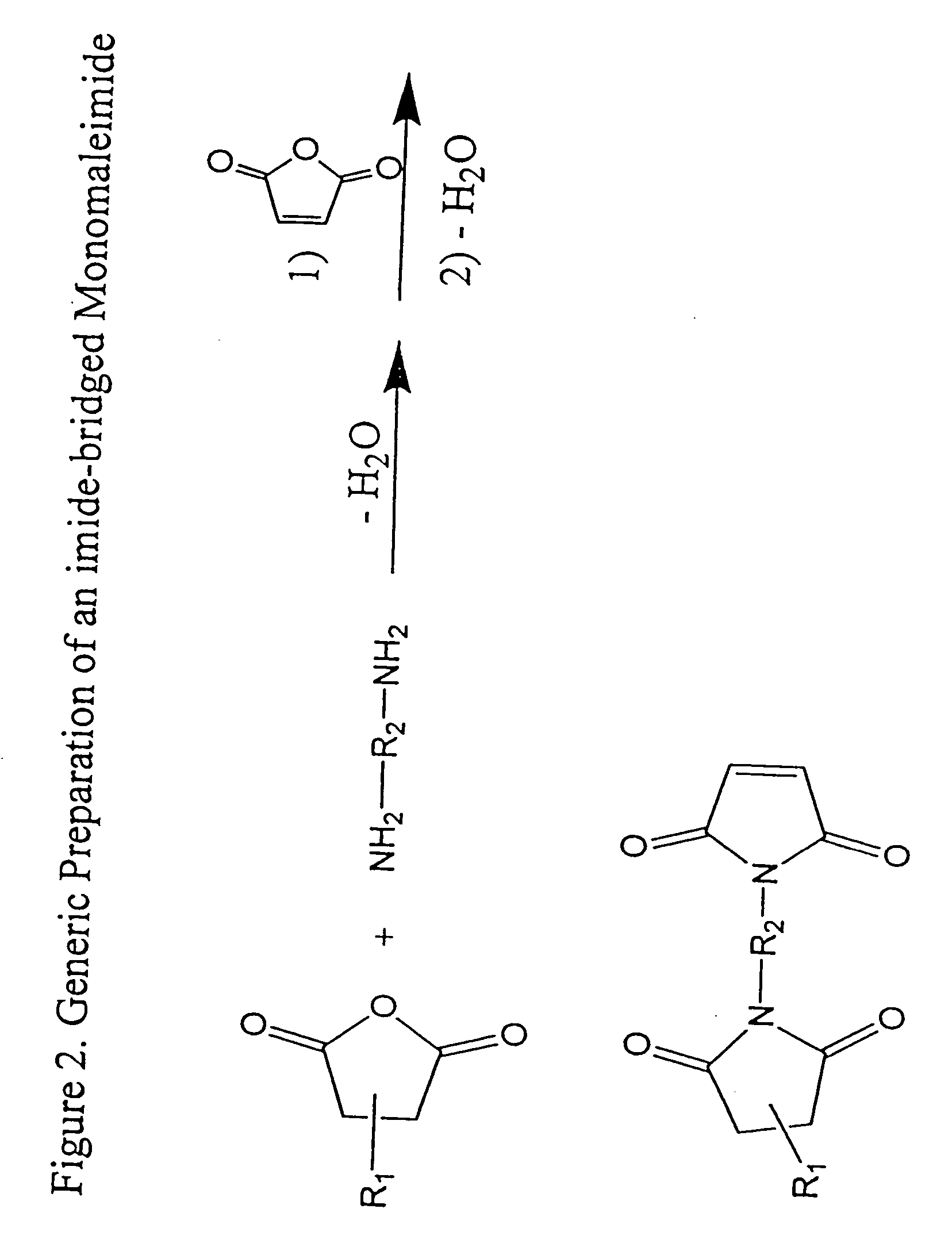Imide-linked maleimide and polymaleimide compounds
a technology of maleimide and polymaleimide, which is applied in the field of thermosetting compositions, thermosetting compounds and compositions containing imideextended mono, bis, and polymaleimide compounds, can solve the problems of brittleness of thermoset compositions, and achieve the effect of improving the performance of maleimide thermosets
- Summary
- Abstract
- Description
- Claims
- Application Information
AI Technical Summary
Benefits of technology
Problems solved by technology
Method used
Image
Examples
example 1
[0127]A 500 ml round bottom flask equipped with a Teflon coated stir bar was charged with 250 ml of toluene. Triethylamine, 35 g (0.35 mole) was added to the flask, followed by the slow addition of 35 g (0.36 mole) of anhydrous methanesulphonic acid to form a salt. The mixture was allowed to stir for approximately 10 minutes, followed by the addition of 57 g (0.11 mole) of Versamine 552 (dimer diamine, Cognis Corporation). Pyromellitic dianhydride (10.9 g, 0.05 mole) was slowly added to the stirred mixture. A Dean-Stark trap and condenser were attached to the flask, and the mixture was heated to reflux for 2 hours to form an amine-terminated diimide. The theoretical quantity of water from this condensation had been collected by this time. The reaction mixture was cooled down to room temperature and 12.8 g (0.13 mole) of maleic anhydride was added to the flask, followed by the of 5 g of anhydrous methanesulphonic acid. The mixture was brought to reflux for an additional 12 hours to o...
example 2
[0128]Similar to the method outlined in the previous example, a salt was formed by mixing 38 g (0.38 mole) of triethylamine with 38 g (0.39 mole) of anhydrous methanesulphonic acid in 250 ml of toluene. Versamine 552, 59 g (0.11 mole) was added to the flask, followed by the slow addition of 16.1 g (0.05 mole) of 3,3′,4,4′-benzophenone tetracarboxylic dianhydride. About two of hours of reflux were required for the azeotropic removal of the water to form the amine-terminated diimide. The mixture was cooled down to room temperature, followed by the addition of 12.5 g (0.13 mole) of maleic anhydride and 5 g of methanesulphonic acid. The mixture was refluxed again for 12 hours to form the bismaleimide. The product was worked-up according to the procedure described in the previous example. A dark amber colored resin (65 g, 82% yield) was collected after the complete removal of the solvent.
example 3
[0129]A salt was made by mixing 10 g (0.10 mole) of triethylamine with 11 g (0.11 mole) of methanesulphonic acid in 200 ml of toluene. Verasmine 552, 32 g (0.06 mole) was added to the mixture, followed by the slow addition of 13.5 g (0.03 mole) of 1,1,3,3-tetramethyl-1,3-bis(norbornyldicarboxylic anhydride)disiloxane. The amine-terminated diimide was formed after the azeotropic distillation of the water, which required approximately 1 hour of reflux. The mixture was cooled down, followed by the addition of 10 g (0.10 mole) of maleic anhydride along with 3 g of methanesulphonic acid. The mixture was refluxed for 18 hours to collect the required amount of water in the Dean-Stark trap. The work-up of the product was conducted as outlined in the previous examples. The final material (35 g, 73% yield) was obtained as a dark-amber colored resin after the removal of the solvent.
PUM
| Property | Measurement | Unit |
|---|---|---|
| temperatures | aaaaa | aaaaa |
| temperature | aaaaa | aaaaa |
| Tg | aaaaa | aaaaa |
Abstract
Description
Claims
Application Information
 Login to View More
Login to View More - R&D
- Intellectual Property
- Life Sciences
- Materials
- Tech Scout
- Unparalleled Data Quality
- Higher Quality Content
- 60% Fewer Hallucinations
Browse by: Latest US Patents, China's latest patents, Technical Efficacy Thesaurus, Application Domain, Technology Topic, Popular Technical Reports.
© 2025 PatSnap. All rights reserved.Legal|Privacy policy|Modern Slavery Act Transparency Statement|Sitemap|About US| Contact US: help@patsnap.com



